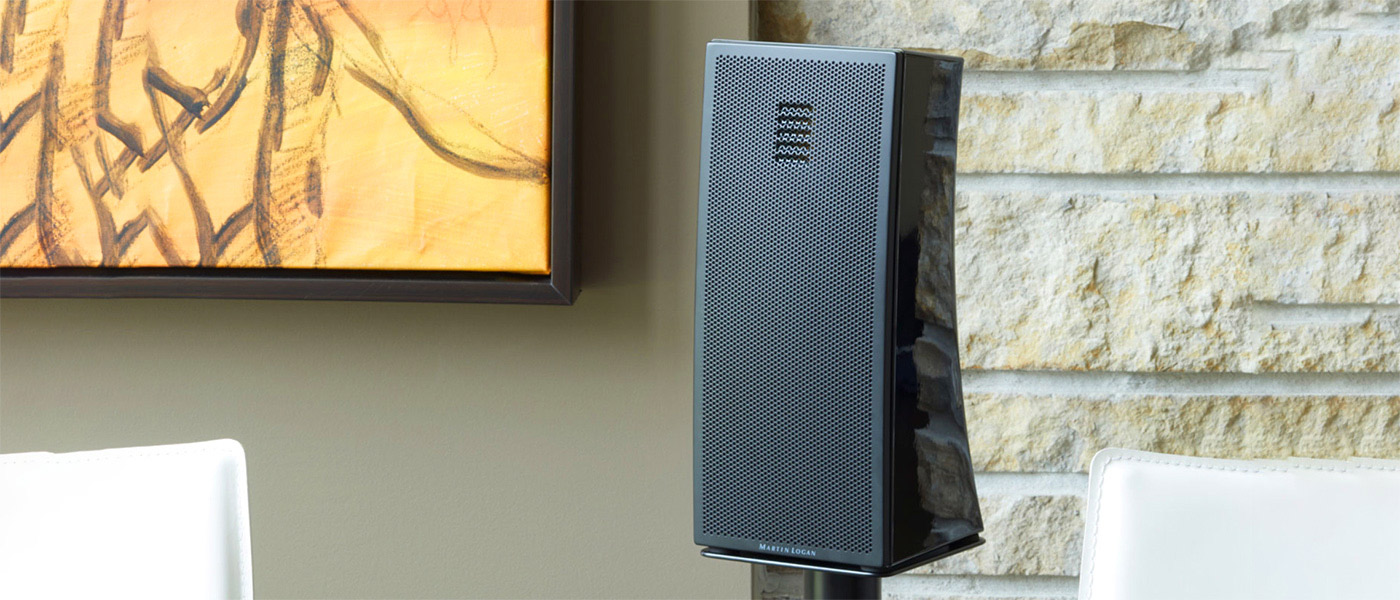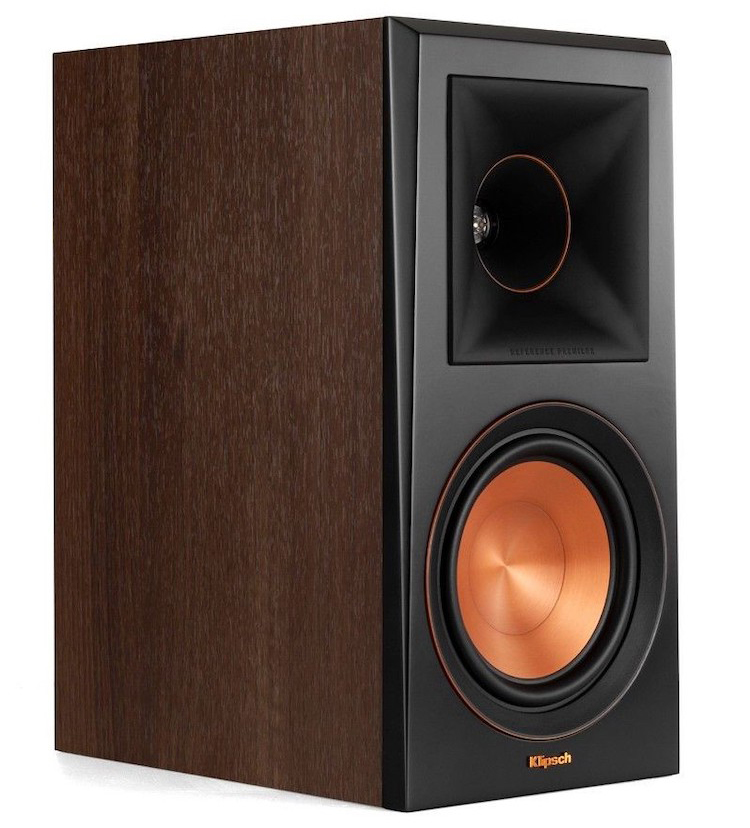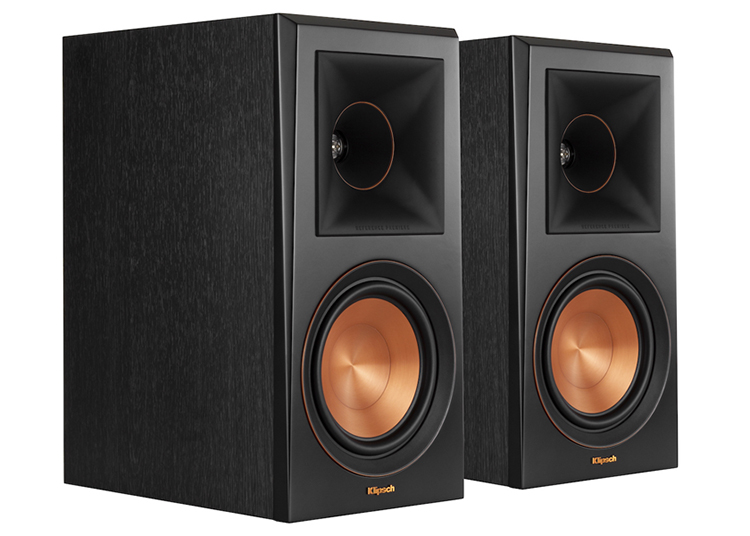
Their bass output is good for a box their size, and the Tractrix horn tweeter provides the traditional horn virtues with none of the traditional horn honkiness. Will they challenge speakers costing ten times their price? No, but at their usually-discounted selling price, they’re a bargain.
Klipsch RP-600M Speaker
- The Klipsch RP-600M loudspeakers are compact but can image big.
- These speakers can sound slightly thin in the midrange depending on placement.
- These speakers need a subwoofer unless played in a small room.
- For the price, the Klipsch RP-600M speakers offer fine value.
- Quality touches like bi-wiring capability are included.
- The 1” titanium tweeter mounted in Klipsch’s hybrid Tractrix horn images well.
- The 6.5” spun Cerametallic woofer is visually attractive.
- Stands are needed to get the best from these speakers.
I have always enjoyed Klipsch speakers, and the RP-600Ms are definitely worthy of the Klipsch name. The Klipsch company, founded in Hope, Arkansas, is the manufacturer of the RP-600M speakers. Unlike the storied Klipschorn and the rest of Klipsch’s Heritage line, these small speakers are listed on the Klipsch website under both the Home Audio and the Home Theater sections. And although I did briefly use them in my home theater, I was more interested in what they could do in the context of a high-end home stereo.
DESIGN:
2-way ported bookshelf speaker
TWEETER:
1” titanium LTS vented tweeter with hybrid Tractrix horn
WOOFER:
6.5” spun Cerametallic with butyl rubber surround
CABINET:
Bass-reflex via rear-firing Tractix port
CABINET MATERIAL:
Medium-Density Fiberboard (MDF)
FINISH:
Vinyl in ebony or walnut with piano-finish black available for extra cost
GRILL:
Flexible magnetic attachment
DIMENSIONS:
15.69” tall x 7.95” wide x 11.85” deep
WEIGHT:
16 pounds (7.3 kilograms)
FREQUENCY RESPONSE:
45-25kHz +/- 3dB
SENSITIVITY:
96dB @ 2.83V @ 1 meter
POWER HANDLING:
100 watts continuous / 400 watts peak
NOMINAL IMPEDANCE:
8-ohms compatible
CROSSOVER FREQUENCY:
1500Hz
INPUTS:
Dual binding posts for bi-wire/bi-amp
ACCESSORIES:
Self-adhesive rubber feet (8)
MSRP:
Ebony or Walnut vinyl – $549/pair, Piano Black – $649/pair
Company:
SECRETS Tags:
rp-600m, bookshelf, loudspeaker, review, Klipsch, 2-way, Tractix, Loudspeakers Review 2019
The Klipsch Reference Premiere RP-600M monitor speakers are part of Klipsch’s home-audio and home-theater lines. In home-theater service, the speakers integrate into the newest Klipsch home theater ensemble. The RP-600M bookshelf speakers are suitable as fronts, surrounds, or effects channels. But functioning as part of a home theater is only part of their design goal. They are also expected to function as high-quality stereo speakers.
They are designed for use with or without a subwoofer. In a very small room, the speakers might have sufficient bass extension without one. But since my room is larger, I did most of my evaluation with two Powersound Audio S1510DF subwoofers active below 100 or 120Hz. Of course, Klipsch also offers a wide variety of suitable subwoofers.
The RPs are a small-ish ported box loudspeaker that show signs of better-than-average design and engineering. The magnetic grilles fit perfectly, and the speakers have obviously been voiced for use with their grilles attached. Without them, the tweeters can sound slightly bright.
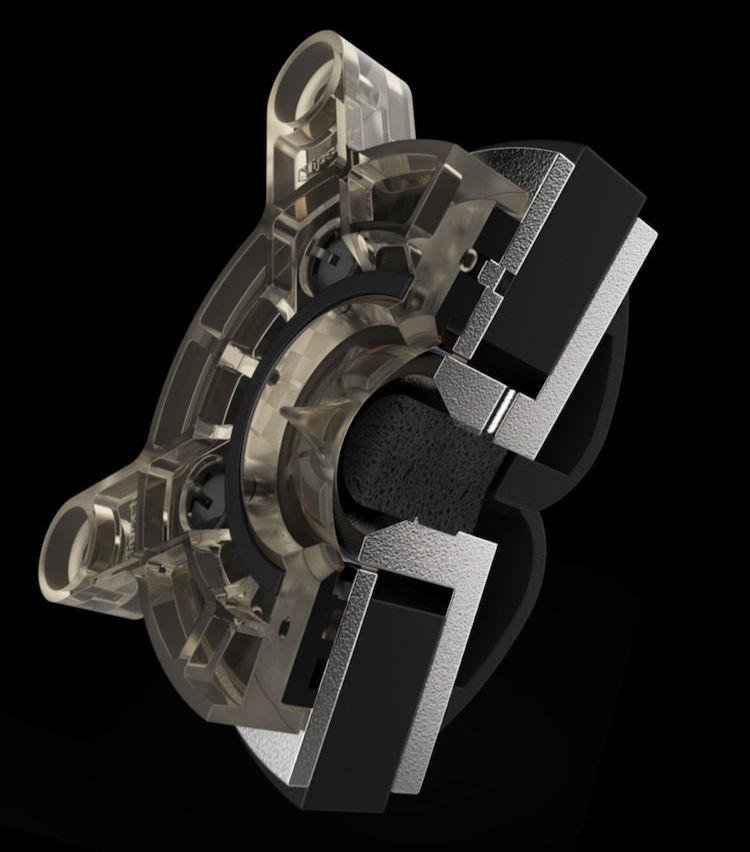
The tweeter of the RP-600M shows signs of careful engineering. Not only does the magnet of the tweeter vent the pole-piece, but the dome itself is made of ultra-light titanium. The tweeter’s “Linear Travel Suspension” is claimed to enhance the pistonic motion of the diaphragm at higher frequencies while also reducing distortion.
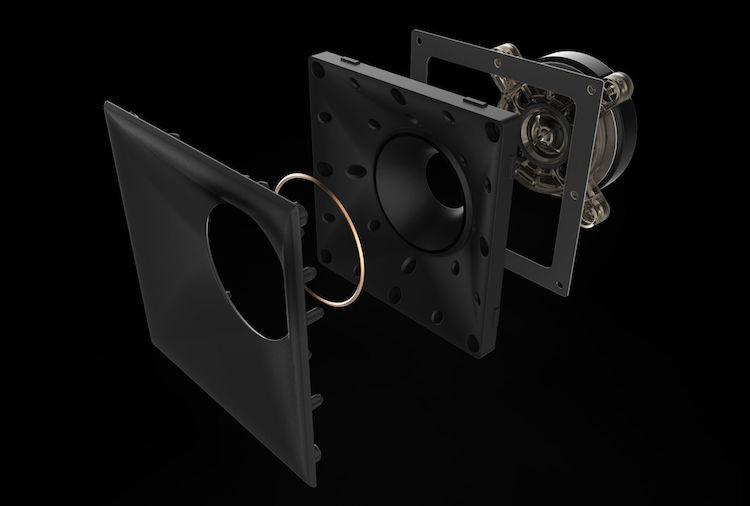
The tweeter’s phase plug is designed specifically for the new molded silicone Tractrix horn, that dampens horn resonances at high volumes. The horn is a two-piece construction with a copper-colored trim ring between the throat and the Tractrix horn. This design seems to have been uniquely successful in eliminating the coloration that many audiophiles have consistently criticized in all brands of horn-loaded speakers.
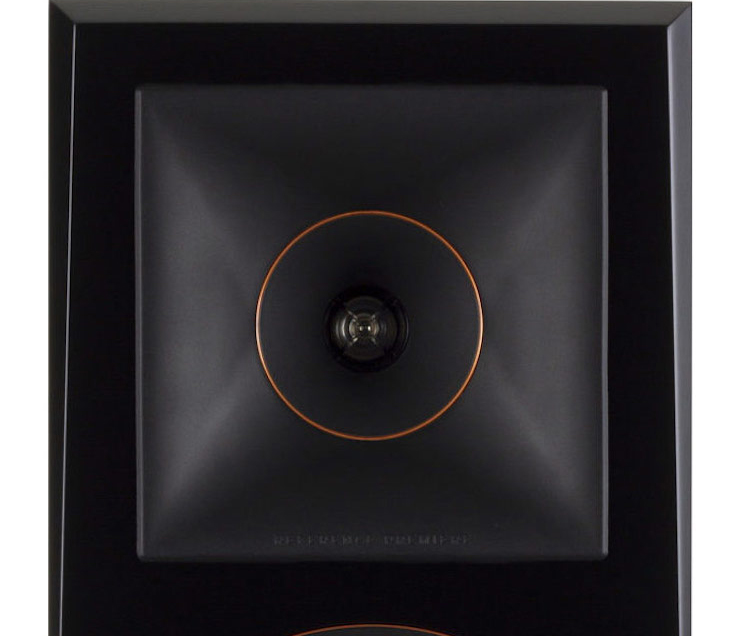
The RP-600M’s woofer uses a highly flexible and durable butyl rubber surround and is designed with a dual-layer voice coil. The proprietary-to-Klipsch, spun Cerametallic cone itself is finished in a copper color that will polarize the viewer. Either you like it, or you don’t. In my opinion, since the cone will be hidden behind the grill, it really shouldn’t matter.
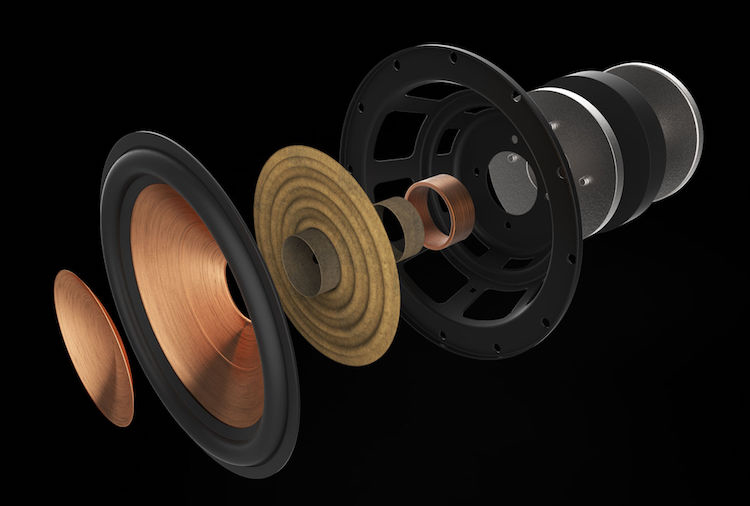
The cabinet seems to be well made and relatively non-resonant. The rear-firing port is highly unusual in that it, also, is fitted with a Tractix-style horn to better couple the port with the room air. The terminals are jumpered from the factory, but the jumpers can be removed for bi-wiring or for bi-amplification. I did most of my listening in bi-wire mode.
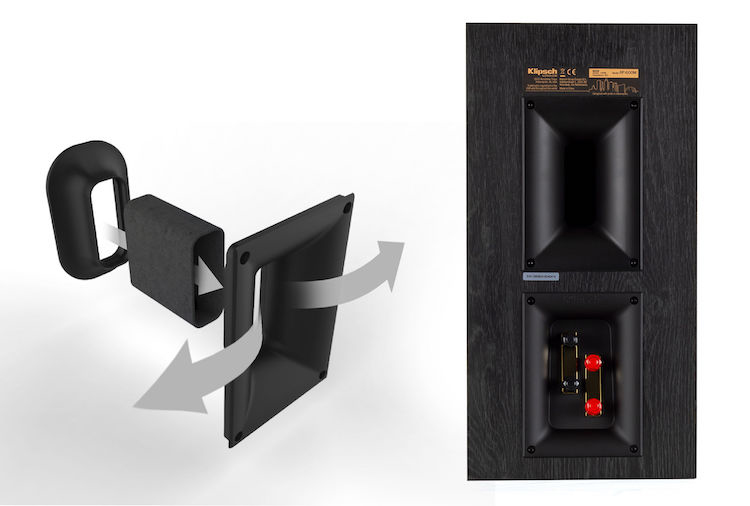
This level of design effort is unusual for a home-theater speaker but is common for speakers intended for higher-end stereo. I initially set up the Klipsch RP-600M speakers directly on top of my subwoofers. But in this location, the speakers were too close to the floor (I’m a tall listener). I tried using tilt bases to angle the tweeters toward the listening area, but the sound remained unimpressive. I finally placed the speakers on top of stands, getting them out of proximity to the large subwoofer cabinets, and THEN the speakers really came alive. The best position in my room turned out to be with the woofers at ear level and the stands somewhat wider apart than with most speakers.
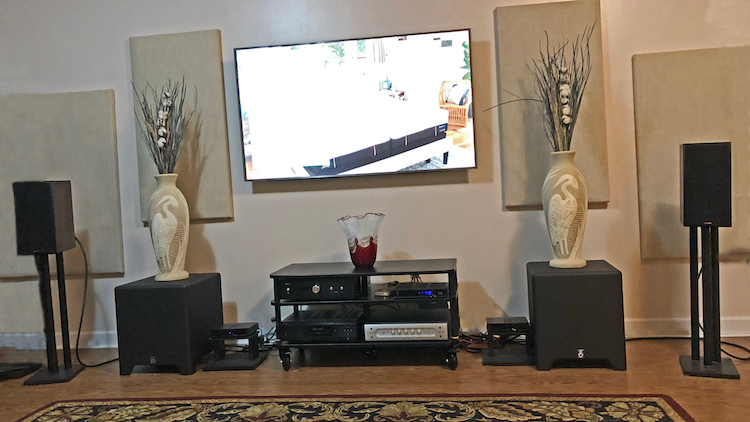
Associated equipment for this review included:
- Roon software on a Mac Mini server
- OPPO UDP-205 disc player used as a Roon destination and as a DAC
- Audio GD HE-1 preamplifier
- Emotiva PA-1 power amplifiers
- Arcam AVR550 surround receiver
- Heathkit monophonic 12-watt monoblock tube amplifiers
- Audioquest wiring (both XLR and RCA interconnects)
- Powersound Audio S1510DF subwoofers (2)
- JL Audio CR-1 electronic crossover
- Various speaker stands
Intended primarily for home theater use, the Klipsch RP-600M speakers are available with a full spectrum of supporting center channel, subwoofer, and surround speaker equipment. Although I did not review the entire Klipsch RP home theater ensemble, I have heard it on display in stores, and find it to be entirely adequate to its task.

The Klipsch RP-600M speakers are sensitive to upstream equipment. This is the aggressive way of saying that the speakers are transparent and that you can clearly hear the upstream components. This is a significant compliment, because many speakers, some costing many multiples of the RP-600M’s price, are not as transparent. The little Klipsch speakers had a particular affinity for the Emotiva PA-1 class-D mono-block amplifiers. These amps maximized the depth and detail that the speakers are capable of.

I initially listened to these speakers with my Arcam AVR-550 receiver. Now the Arcam is one of the very best-sounding AV receivers in my experience, but when I switched from the Arcam to the separate stereo components, the difference was jaw-dropping.
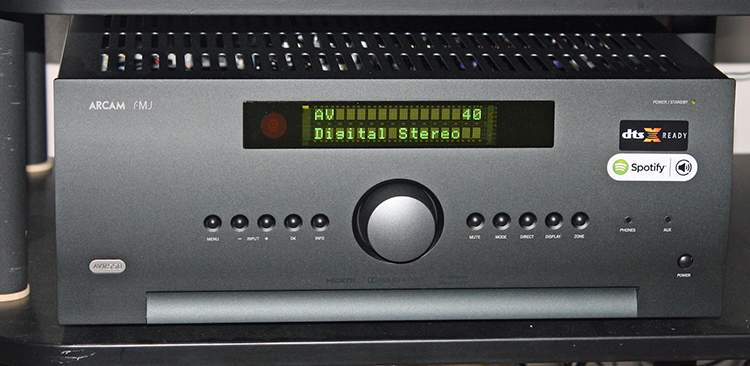
Don’t expect to get the best of the Klipsch RP-600M speakers when using a second or third-rate AVR. And unfortunately, there still ARE plenty of second and third-rate AVRs on the market. In fact, I’d go so far as to say that you could easily spend 10x the price of the RP-600M speakers on your electronics and still notice audible improvements with each upgrade. The speakers can be that revealing.
Secrets Sponsor
But the speakers have limitations. If you don’t respect the limitations, bad things happen. What are those limitations?
1. The bass rolls off swiftly unless reinforced by proximity to room walls. Since these speakers are intended for use with subwoofers, this is not a major flaw, and in a smaller room, the speakers might provide sufficient bass without a subwoofer. But since the speakers image better away from the walls, trading wall-proximity and its better bass response for loss of imaging is a poor exchange. Keep the speakers out in the room!
2. The speakers, despite their high 96dB 1w/1m sensitivity have an ultimate loudness above which they will distort. For surround sound listening (where these speakers would be used as front or rear R/L effects speakers) the loudness limit would not be an issue. At normal stereo listening levels, the loudness limit is not an issue unless you want concert volumes. In that case, you’ll want larger speakers.
3. The speakers are more placement-sensitive than most. Get them too close together and they can sound like they have a hole in the midrange response. Get them toed in too much, and the tweeters can sound shrill. In my room, the best position for them was more widely separated than usual with only a very slight toe in. Your results will vary, depending on the shape and size of your room.
4. The height of the speakers has a profound impact on their sound. With the speakers below my ear level, I couldn’t get them to sound full enough in the midrange. I finally put them on stands with the woofers at ear level and the tweeters slightly above. This provided the best midrange tone in my room. But be prepared to experiment with speaker height – it has a stronger than usual influence on voicing with the RP-600Ms.
The minimal owner’s manual mentions none of the above. This is a deliberate choice by Klipsch since placement advice is so strongly room-dependent. This brevity, however, puts the onus on the customer to optimize the speaker’s performance in their own room. Since there is a plethora of good online advice on this topic, the omission seems reasonable. After all, entire books have been written on the topic…
I used a wide variety of music to evaluate the Klipsch RP-600M speakers. I started with one of my favorites –

Beethoven’s Sixth Symphony as performed on period instruments by the Academy of Ancient Music (Christopher Hogwood conducting). This is one of my favorite performances of this work, and I’ve become very familiar with the recording over the years.
With the Klipsch RP-600M speakers, the treble highlights were crisp and detailed, but the midrange seemed to be too smooth. Is this an artifact of the Tractrix tweeter crossing over to the 6.5” woofer? It’s hard to say, so then I tried:
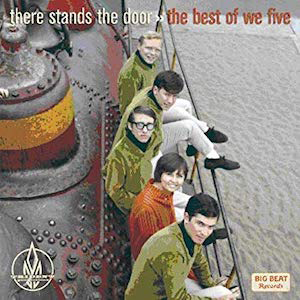
“You Were On My Mind” by We Five – I particularly wanted to hear the 12-string guitar to see if the tone sounded right. At this point, I began seriously “speaker-dancing,” adjusting the speakers’ position, width, toe-in, and height looking for sufficient midrange fullness without destroying the treble detail. At this point, I also compared some first generation Klipsch Heresy speakers to the RP-600Ms and the Heresys spanked the smaller speakers by exhibiting much better midrange fullness and detail. The RP-600Ms, though, maintained their lead in imaging.
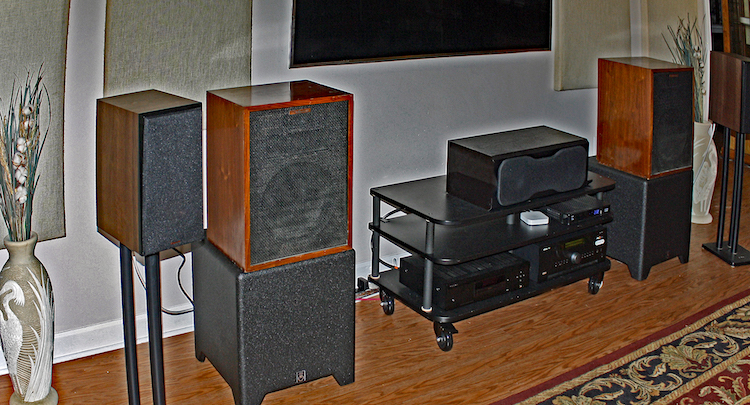
But once their positioning was optimized by ear, the little RP-600M speakers began to draw even with and then pass the older and larger Heresy speakers. I got the midrange I wanted with the 600’s woofers at ear level, and with the speakers on their stands set widely apart. I also found they imaged better with a higher crossover frequency to the bass subwoofers. At a 100-120Hz crossover frequency (for my stereo subwoofers), I found the best compromise between midrange tone, imaging, and subwoofer integration.
A subwoofer crossover frequency this high may not be possible when using a single subwoofer. The listener might be able to identify the sound coming from the subwoofer as discreet from the location of the satellite speakers. This would destroy the soundstage and imaging. So, for use with a single subwoofer, the THX-standard crossover frequency of 80Hz would probably be a better choice.
At this point, I pulled out one of my favorite discs of all time – Jennifer Warnes – “The Hunter.”

I like most of the cuts on this disc, but my favorites are “Somewhere, Somebody / Lights of Lousianne / Way Down Deep” and the title cut “The Hunter.” Additionally, I find the recording itself exceptional. At this point, I lost the ability to listen analytically, and just sat back in total enjoyment.
Another way I discovered to improve the tonality of the Klipsch RP-600M speakers was to use them with vacuum tube electronics. In my experiment, I got more midrange and a more accurate treble by using tube amplification. Since these speakers are so efficient, even low-powered tube amplifiers can suffice. Again, your ears may vary…
I also did some experimentation with upstream equipment changes during this review and found consistently that I could easily hear the subtle changes in not only the components, but also in the wiring of the system. Surge suppressor versus plugged directly into the wall? Easy to tell the difference! OPPO direct to power amplifiers versus inserting the Audio GD preamp between the two? Easy to tell the difference!
Many speakers lack the resolution to so clearly exhibit the quality (or lack of) in the upstream components. In fact, I’ve heard MANY far more expensive speakers that couldn’t do what the little Klipsch RP-600M speakers would do. This is all the more surprising because of the Klipsch’s most modest price. There’s a LOT more engineering in this box than with many speakers in the price range. That said, you still won’t be mistaking these for anybody’s $10K per pair “statement” speakers. There are limits to what you can do with a cabinet this size but considering that these speakers will most often be used with a subwoofer, the speakers shine within their limitations.
It also needs to be mentioned that these Klipsch RP-600M speakers can be driven with lower-powered electronics. Their 96dB (1w/1m) sensitivity gives them flexibility to work with amplifiers that just couldn’t be considered with less efficient speakers. Remember that the average home stereo listener uses less than one watt for “normal” listening and no more than 10 watts for “really LOUD” listening. And those numbers apply to just about all speakers, most of which are less sensitive than the Klipsches. 96dB is LOUD! And that’s what these speakers can give you with only one watt.
Along with that high sensitivity comes a variety of other benefits. The speakers themselves produce much lower intermodulation distortion, the amplifiers run much cooler, amplifier distortion is usually reduced at lower power outputs, and since the subwoofer is producing most of the bass, the current demand on the main amplifiers is significantly reduced. All these things help wring the very best out of any system that uses highly-efficient loudspeakers.
So ultimately, the Klipsch RP-600M speakers do require more effort and attention concerning associated equipment, setup, and positioning than most other speakers. Such work is absolutely necessary to get the very best sound. That effort, however, definitely seems to be worth it for the improvement in sound quality. It’s a shame that the vast majority of purchasers may never know how good these speakers can be. At their best, the little Klipsch speakers can sound exceptionally dynamic, clean, and honest, challenging larger and more expensive speakers.
Secrets Sponsor
The frequently-discounted price of the Klipsch RP-600M speakers must also be considered a bargain. But to the actual price of the speakers, you must also add the price of the requisite speaker-stands. High quality stands are not cheap. When considered as a stand/speaker combination, floor-standing tower speakers, with their more robust bass response, may offer equivalent or better value, depending on your priorities. It should also be noted that if you really like the sound of the RP-600M, the Klipsch company also offers a wide variety of tower speakers that use similar drivers, sensitivity, and voicing.
The following measurement was made with the UMIK-1 calibrated microphone approximately one meter from the speaker’s front grill using Room Equalization Wizard (REW) software for Mac.
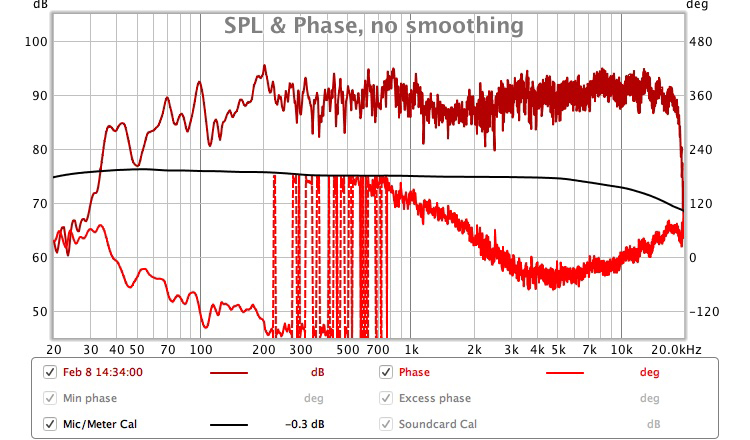
By looking at the results, one can see that these Klipsch RP-600M speakers offer relatively smooth frequency response. Although not shown by this single measurement, the speakers’ dispersion is also better than average since I was able to obtain good imaging both with the speakers perpendicular to the rear wall and toed in. But the difference between good and great can be found when you spend the time to optimize spread and toe-in for your specific room.

The KLIPSCH RP-600M SPEAKERS are fine home theater speakers and can be much better than average stereo speakers with careful setup and equipment matching.
- High quality for the price
- Available in wood-grain vinyl finish at no additional cost
- Compact and efficient home theater effects speakers
- High sensitivity allows use with modestly-powered amplification
- Bi-wire and bi-amplification compatible
- Molded-silicone Tractrix horn reduces resonance at high volumes
- Piano black finish available at extra cost
- Same drivers in a three-way, floor-standing design that adds a built-in, powered subwoofer
- Slightly more fullness in the midrange voicing
- Optional factory-supplied speaker stands
- Optional real-wood finish
As a home theater speaker, I find nothing to criticize about the Klipsch RP-600M. It’s minor shortcomings will be erased by its support from other speakers in the surround-sound ensemble. If you’re the type of person who is willing to spend the time and effort to optimize the speakers, then the little 600Ms will also perform at a very high level as 2.1 or 2.2 channel stereo speakers. But to coax the maximum performance from the speakers, some room-optimization effort will be required.


